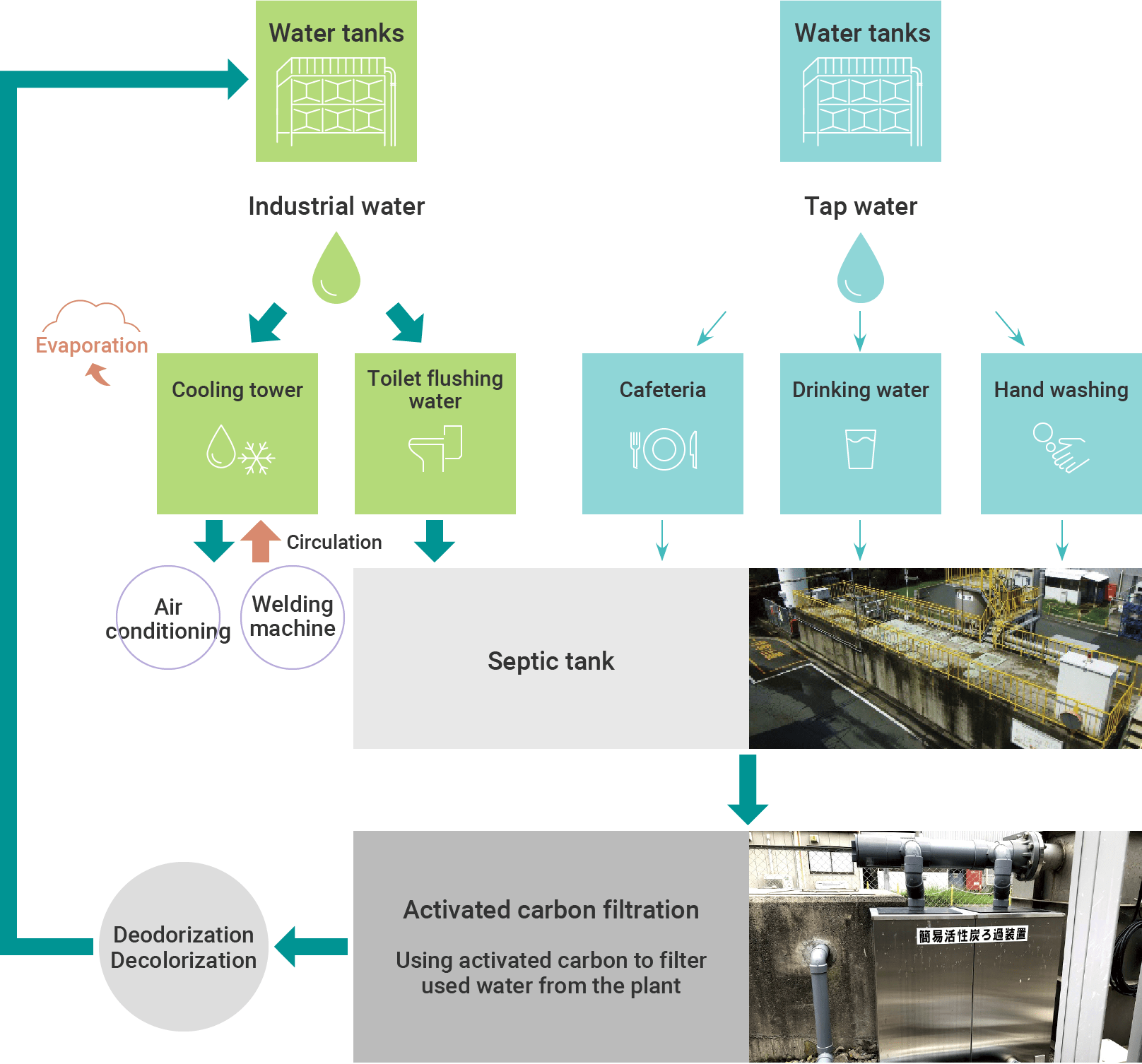Water resource impact minimization
Basic approach
In our efforts to achieve zero wastewater, the Toyota Boshoku group is making efforts to reduce water consumption by recycling wastewater generated in production processes, developing water-less production processes, and incorporating rainwater into our water supply.
Additionally, we make use of international assessment tools to evaluate risks posed to water resources at our various business sites, and promote activities and improvements that reduce such risks, with special attention given to regions and business entities facing particularly high risks.
The Company also contributes to energy conservation through cooling and circulating water purification systems using proprietary filtration technologies.
Water Quality and Quantity Risk Assessments
Water risk assessments were conducted at group production sites inside and outside Japan (109 sites*) using the World Resources Institute’s Aqueduct tool. We are assessing the potential for depletion or shortage of water resources using “water stress” as an indicator for water quantity, based on the balance between water supply and demand in the region. Using water quality as an indicator of “coastal eutrophication potential,” we are assessing the potential for effluent arising from plants to affect the phenomenon of abnormal phytoplankton growth (such as red tide).
Based on the results of the assessment, we will reduce water withdrawal and properly manage water discharge in consideration of the water situation in each country and region.

- As each plant is counted as a separate site for production entities with multiple plants, the number of sites shown on this page does not match production entities count listed on the Environmental Data page
Making a Circular Recycling System for Septic Tank Output Water
In fiscal 2020, the Toyota Boshoku Toyohashi-Kita Plant in Aichi prefecture has developed its own system for filtering and reusing the plant's wastewater, ensuring zero wastewater drainage is produced.
The Toyohashi-Kita Plant makes use of two categories of water; potable water that can be used as drinking water, and industrial water for such uses as machine coolant and in toilets. In the past, water was treated in septic tanks, and 35 tons of water was discharged into the sea every day from the plant. Now this water is filtered with activated carbon in specially-developed tanks to remove any lingering odors or discoloration, before being pumped back into water tanks for further use as industrial water, thus ensuring no water needs to be discharged. We obtained a patent for this circulation system in fiscal 2023.
Use of this circulation system has also been expanded to the Toyohashi-Minami Plant and Toyohashi-Higashi Plant, with plans to make the entire Toyota Boshoku group wastewater free in the future.






